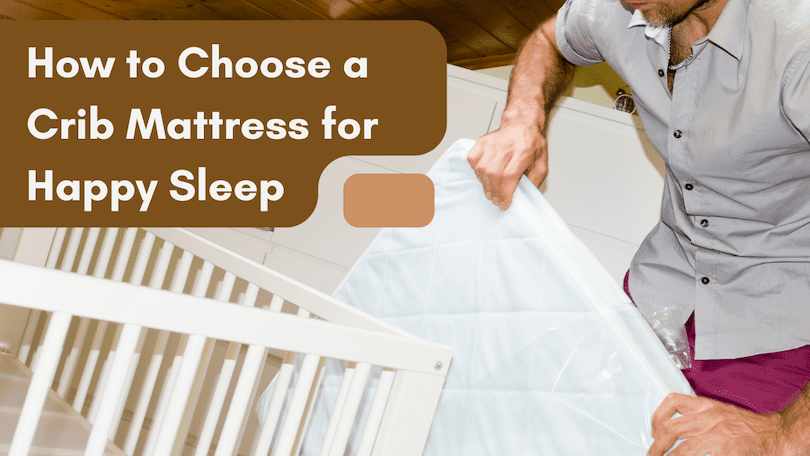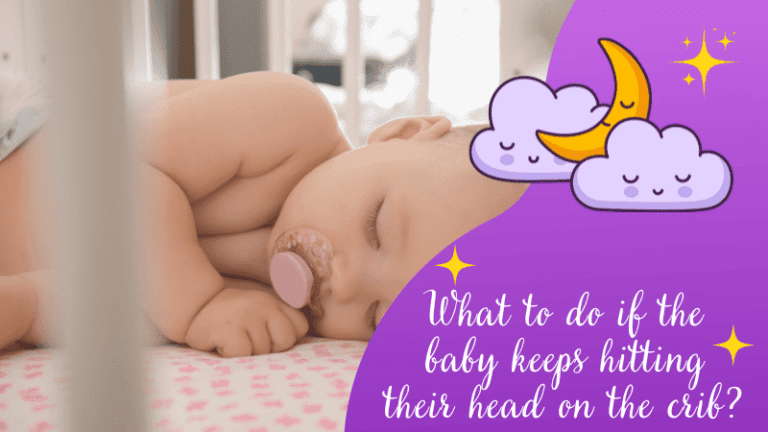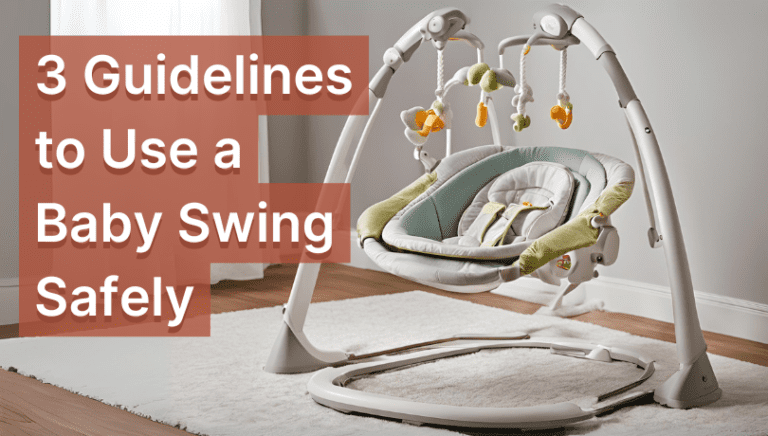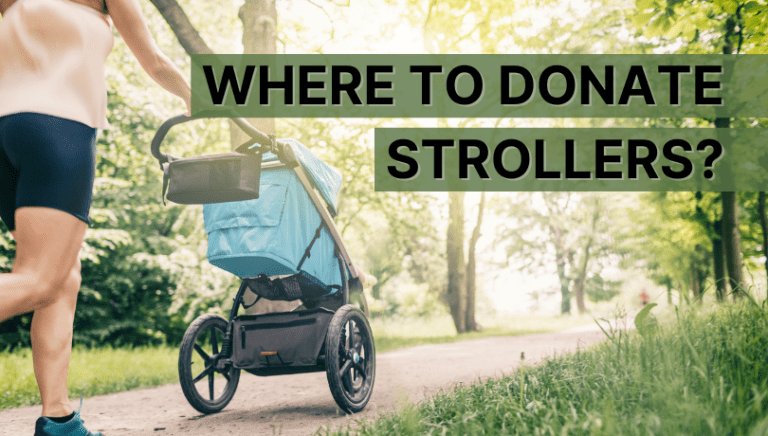How to Choose a Crib Mattress for Happy Sleep
Going to be parents soon?
It felt like a rollercoaster ride when I was about to give birth: thrilled, excited, and in pain! Meanwhile, one thing that kept me calm was having a nursery prepared, and that meant I shopped for plenty of baby things beforehand, including a crib mattress.
But how to choose a crib mattress that keeps your baby comfy and follows all safety guidelines? That’s where I can provide some insight.
From choosing the right size, checking firmness, and considering suitable types, I have experienced it all. So, let’s walk through all your queries one by one.
Table of Contents

Do Crib Mattresses Matter? Why Are They Important?
There are reasons why crib mattresses are so crucial. The AAP even mandates that infants should sleep on their backs on a firm mattress (specifically designed for newborns), and not share sleeping space with their parents.
Why?
- Mattresses for adults are usually on the softer/plusher side; they sink a little with our body weight. But we as adults know enough to adjust our bodies to keep ourselves comfy.
- However, newborns and infants do not have enough head, neck, or body control just yet. So, if they sleep on a soft mattress like that, there’s a danger of SIDS.
How?
- They can sink into the mattress and then not know how to move themselves into a more comfortable position!
- This can trap their little bodies, or they can end up sleeping in the wrong positions, causing suffocation, breathing issues, entanglement or, God forbid, SIDS.
Sleeping on a firm mattress can support your baby’s spine and bones too, helping them develop mentally and physically!
A Crib Mattress Should
- be firm
- fit snugly into the crib without leaving gaps and
- have a standard weight of 15–18 pounds
Types Of Crib Mattresses

Crib mattresses can be sorted into categories based on the type of material they use at their core or for the filling. So, when you’re buying, look at the product specifications to know what the brand uses for the core/fill. Here are the main types:
1. Foam Crib Mattresses
- Mattresses made with foams (memory or viscoelastic) are lightweight, easy to flip and rotate, and more affordable.
- However, some foam mattresses may have high levels of polythene and vinyl that retain CO2, causing breathing issues and allergic reactions. They are also on the plush side and may sag with time.
2. Innerspring Cores
- These have coils or springs at their core making them heavier but durable. They are layered with foam and cotton cushioning to make the mattress breathable.
- When buying such mattresses, check for coil count and coil gauge (thickness). The higher the coils, the better the mattress.
Recommended Reading – How Many Coils Should a Crib Mattress Have?
3. Cotton
- Mattresses made of cotton, organic cotton, or wovenaire are very breathable, have a long lifespan, and don’t use any hazardous chemicals during manufacturing.
- These are a little expensive but can last you for years. And look for GOTS certifications to ensure they use organic materials only if that’s what you prefer.
Safety Standards To Look For In A Crib Mattress
Crib mattresses need to have certifications that follow CPSC and AAP guidelines for materials testing. All you need to do is simply check for these standards when choosing a crib mattress:
- GOTS (Global Organic Textile Standard): This standard describes that your mattress is organic and that there are no phthalates, polythenes, or flame retardants present in it.
- CPSC and Greenguard Gold Certified: These standards make sure that the mattress passes different cyclic, flammability, compression, and chemical emission tests for good airflow and no CO2 retention.
- CertiPUR-US Certification: This ensures that your foam mattress has a standard weight and goes through extensive heavy metal testing too. This standard is meant to tackle sagging issues and foam exposure.
How to Choose a Crib Mattress: 5 Factors to Look For
1. Breathability
- Baby mattresses made with materials like viscose, vinyl, or polythene, do not permit easy airflow, especially when your baby tends to roll in bed.
- So, a crib mattress has to have breath-through fabric that does not retain CO2, so no sweating or hot sleep surface interrupts your baby’s sleep.
- Consider breathable materials like cotton and wovenaire that have open 3D channels for your baby’s crib mattress.
2. Firmness
- Firmness is a critical factor to look at! Never let your baby sleep on a soft bed (like an adult’s bed). You need a separate yet FIRM mattress for your baby to avoid suffocation and entrapment.
- Test your mattress’ firmness by putting a heavy material (a hammer or a rod) on it. A firm mattress should come back to its shape and not sag or squeeze.
3. Mattress Size and Fit
- Nothing can beat a snug fit. A mattress should fit well in a crib and not leave any gaps in between.
- Standard sizes (28 inches by 52 inches) are for full-sized cribs and there are mattresses for mini cribs too (24 by 38 inches). I recommend not choosing any other sizes other than standard ones.
Mattress Gap Hack!
My pediatrician taught me this hack to check if my mattress has a snug fit: check if the gap between your mattress and the crib is not more than two fingers. If it’s more than that, you might have to switch to a different mattress or crib.

4. Certifications
- Don’t forget to check for mattress safety standards too. As I mentioned above, your crib mattress should have certain certifications to ensure they are safe for your baby.
- The Consumer Protection Safety Commission (CPSC) ensures the mattress passes tests for over 10,000 chemicals. The Greengold Gold certification ensures there are no harmful pollutants or VOCs in the mattress.
- Check for GOTS and CertiPUR-US certifications if looking for organic and foam mattresses.
5. Waterproofing
- Your baby may accidentally pee or spit up on the mattress like every other child. But it becomes a concern when those spit-ups and pees soak into the mattress base.
- That causes bacteria, mold, and mildew to grow, spreading possible diseases and ruining the mattress. Waterproofed covers prevent that and save your cleaning time and effort.
FAQs on How to Choose Crib Mattresses
1. What Should I Purchase: A Foam, Innerspring, or Organic Mattress?
It depends on what you look for in your crib mattresses. Organic cotton mattresses are extremely breathable but expensive as well.
So, if you are looking for more affordable options with just as good quality, foam, and innerspring mattresses are good ideas. Just make sure it is firm enough and also allows good airflow.
2. Is A Crib Mattress Worth It Only If It’s Expensive?
NO, it’s not! You can get budget-friendly crib mattresses that are safe and durable.
Here are some options you can consider: Serta, Dream on Me, Graco
3. Why are Crib Mattresses So Expensive?
Crib mattresses need to be as safe as possible. Period.
That’s why it goes through extensive materials testing and needs certifications before it can pass into the market. This tends to increase their price.
Also, the cost increases based on the materials used. Organic cotton mattresses are more expensive than other materials.
Please keep a healthy budget for your crib mattress. You can also check out more cost-effective options, just like the ones I mentioned above.
4. Can I Use A Mattress Pad On A Breathable Crib Mattress?
Yes. Mattress pads/protectors neither block airflow nor create discomfort for your baby. In fact, it saves the mattress from spills and accidents.
5. Can You Put A Crib Mattress on the Floor?
Yes. Let me explain in detail.
Many babies don’t like their cribs, or they tend to roll like crazy in the crib, making you worry every second. So, yes, it does make sense to switch to a floor bed in such cases.
But, these are some things you should consider before using floor beds:
Baby-Proof The Room: Because the mattress is on the floor, there’s no danger of your baby falling from a height, but you’ll still have to make sure the space is clear of harmful objects and that play toys are unreachable. Please do not skip this!
Set It Away From Walls: Ideally, it helps to have the mattress in the center of the room and at least a few feet away from the walls to avoid entrapment.
Air It Out: If you’re not using slats underneath, make sure you air it out when it’s not in use to keep out mold, smells, and more. You can do so by simply leaning it against a wall in an airy space.
Baby proofed rooms are crucial if you’re placing your mattress on the floor. You can also use baby monitors to keep an eye on them for extra precaution.
6. Can I Reuse an Old Crib Mattress That Another Child Has Used?
A new mattress is always a safer option than an old one. But you can use an old mattress if it still maintains firmness and is free from bugs, mold, and bacteria.
7. How Long Does A Crib Mattress Last?
There’s no specific expiry on crib mattress labels, but it can last you even for 5–6 years if maintained properly and is free from mold, bugs, and bacteria.
If you have a new, unused crib mattress, use it without worry! Just check for firmness and hygiene.
Further Reading: Do Crib Mattresses Expire?
Concluding: How to Choose a Crib Mattress
Focus on firmness, size, certifications, and waterproofing to ensure a secure sleep environment for your baby.
Also, you can opt for foam or innerspring mattresses if they meet safety standards. And know that price doesn’t always determine quality, so look for budget-friendly options with proper certifications.
Keep these tips in mind, and you’ll find the perfect crib mattress for your little one!






